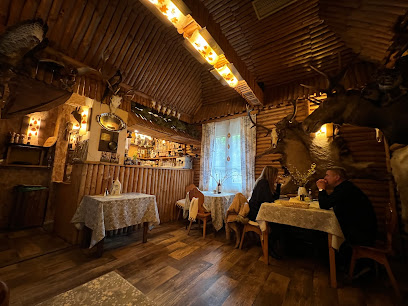
Kampinos National Park: Poland's Wild Heart
Explore the natural beauty and rich history of Kampinos National Park, Poland's serene escape just outside of Warsaw, perfect for hiking, wildlife watching, and cultural exploration.
Kampinos National Park, located just west of Warsaw, is a haven for nature lovers and outdoor enthusiasts. This expansive park encompasses a diverse landscape of dense forests, serene wetlands, and wide open meadows. It offers a peaceful retreat from the hustle and bustle of city life, making it an ideal destination for those seeking tranquility and a connection with nature. The park is a sanctuary for wildlife, home to an array of species such as moose, deer, wild boar, and over 200 types of birds. Visitors can explore its rich biodiversity through a network of well-marked trails, perfect for hiking, cycling, and even cross-country skiing in the winter. The trails vary in difficulty, catering to both casual strollers and serious hikers. One of the unique features of Kampinos National Park is its cultural heritage. Scattered throughout the park are historical landmarks, including remnants of old villages, cemeteries, and World War II memorials. These sites offer a glimpse into the region's past and add an intriguing historical dimension to your visit. The park is also dedicated to conservation and environmental education. Visitors can learn about the park's efforts to protect its ecosystems and the importance of preserving natural habitats. The park's visitor centers provide informative exhibits and resources to enhance your experience. Whether you're looking to embark on an adventurous hike, observe wildlife, or simply enjoy a peaceful day in nature, Kampinos National Park offers a diverse and enriching experience for all types of travelers.
Local tips in Kampinos National Park
- Visit in the early morning or late afternoon to increase your chances of wildlife sightings.
- Bring insect repellent, especially during the summer months.
- Check the weather forecast and dress accordingly, as conditions can change quickly.
- Carry a map or download a trail app, as cell service can be spotty in remote areas.
- Respect the park rules and stay on marked trails to protect the natural environment.
Kampinos National Park: Poland's Wild Heart
Kampinos National Park, located just west of Warsaw, is a haven for nature lovers and outdoor enthusiasts. This expansive park encompasses a diverse landscape of dense forests, serene wetlands, and wide open meadows. It offers a peaceful retreat from the hustle and bustle of city life, making it an ideal destination for those seeking tranquility and a connection with nature. The park is a sanctuary for wildlife, home to an array of species such as moose, deer, wild boar, and over 200 types of birds. Visitors can explore its rich biodiversity through a network of well-marked trails, perfect for hiking, cycling, and even cross-country skiing in the winter. The trails vary in difficulty, catering to both casual strollers and serious hikers. One of the unique features of Kampinos National Park is its cultural heritage. Scattered throughout the park are historical landmarks, including remnants of old villages, cemeteries, and World War II memorials. These sites offer a glimpse into the region's past and add an intriguing historical dimension to your visit. The park is also dedicated to conservation and environmental education. Visitors can learn about the park's efforts to protect its ecosystems and the importance of preserving natural habitats. The park's visitor centers provide informative exhibits and resources to enhance your experience. Whether you're looking to embark on an adventurous hike, observe wildlife, or simply enjoy a peaceful day in nature, Kampinos National Park offers a diverse and enriching experience for all types of travelers.
When is the best time to go to Kampinos National Park?
Iconic landmarks you can’t miss
Skansen budownictwa puszczańskiego w Granicy
Explore the Skansen Budownictwa Puszczańskiego, an open-air museum showcasing the rich cultural heritage of the Puszcza region in a stunning natural setting.
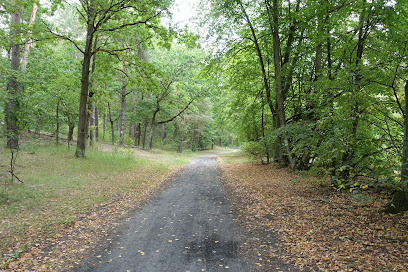
Wieża widokowa
Experience breathtaking views and the beauty of nature at the Kampinos Watchtower in Kampinos National Park, a top scenic spot for tourists.
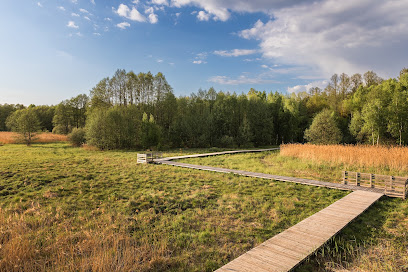
Ośrodek Dydaktyczno-Muzealny Kampinoskiego Parku Narodowego i Muzeum Puszczy Kampinoskiej
Explore the interactive Ośrodek Dydaktyczno-Muzealny in Kampinos National Park, a gateway to Poland's rich natural history and biodiversity.
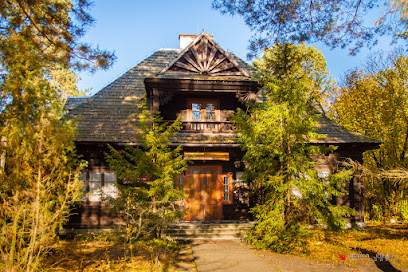
Sosna Powstańców 1863
Explore Sosna Powstańców 1863, a serene tourist attraction in Poland, where nature and history intertwine for a memorable experience.

Kampinos Forest
Explore the serene beauty and rich biodiversity of Kampinos Forest, a UNESCO Biosphere Reserve just outside Warsaw, perfect for outdoor adventures.
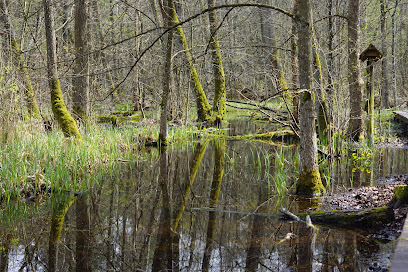
Ścieżka dydaktyczna Skrajem puszczy
Experience the breathtaking beauty and tranquility of Skrajem Puszczy, a top hiking destination in Kampinos National Park, Poland.

Chata Kampinoska
Discover the serene beauty and traditional flavors of Chata Kampinoska, a charming tourist attraction in Granica, Poland.
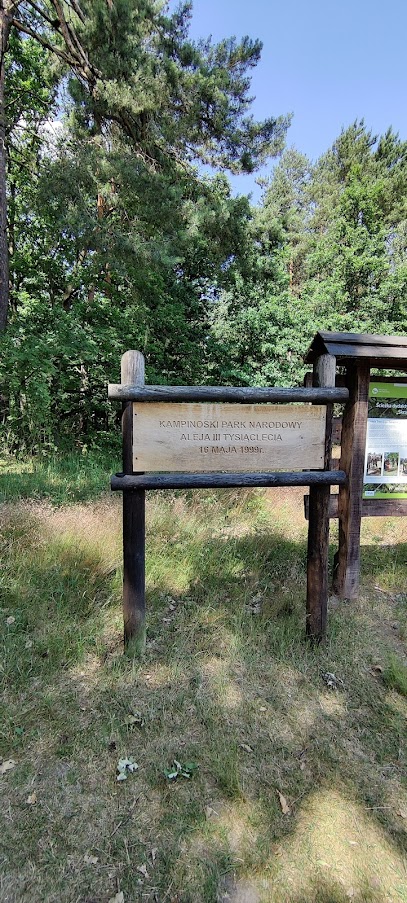
Rezerwat przyrody Kępy Kazuńskie
Explore Kępy Kazuńskie Nature Reserve: A Hidden Gem of Wildlife and Tranquility in Poland's Lush Landscapes.
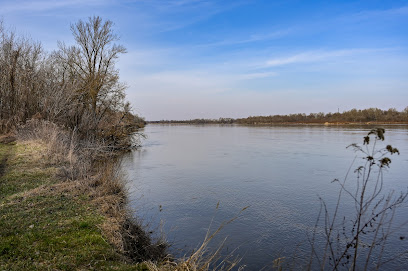
Tor Tubingowy Kampinos
Experience thrilling tubing adventures in the scenic Kampinos at Tor Tubingowy – a perfect playground for families and outdoor enthusiasts.

Unmissable attractions to see
Krasiński Garden
Explore the lush landscapes and historical significance of Krasiński Garden in Warsaw, a tranquil escape in the heart of the city.
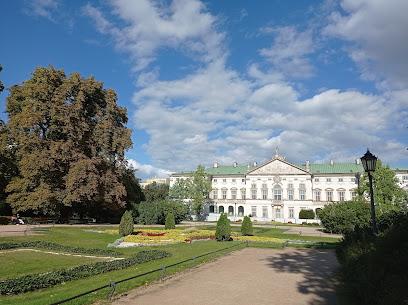
Hala Mirowska
Experience the vibrant hustle and bustle of Hala Mirowska, Warsaw's historic market, offering fresh produce, local delicacies, and unique artisan crafts.

Teatr Komedia
Discover the vibrant performing arts scene at Teatr Komedia in Warsaw, where captivating performances and rich cultural experiences await.

Panorama Sky Bar
Experience stunning city views and exquisite cocktails at Panorama Sky Bar in Warsaw, a premier destination for nightlife enthusiasts.

Pełną Parą na Nowo
Discover the vibrant flavors of Asia at Pełną Parą na Nowo, Warsaw's premier destination for dim sum and fusion cuisine.
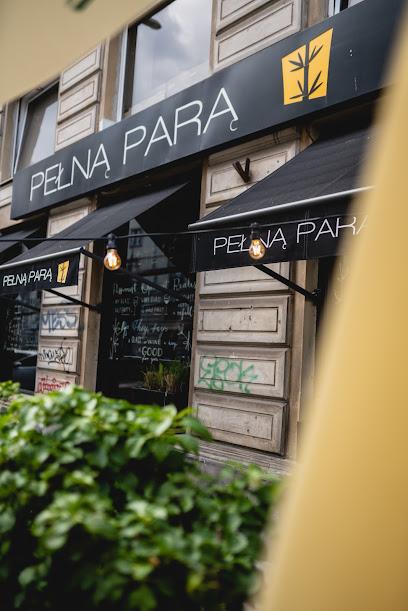
Museum of the 10th Pavilion of the Warsaw Citadel, branch of the Independence Museum
Explore Poland's rich history at the Museum of the 10th Pavilion within the Warsaw Citadel, a captivating journey through resilience and independence.
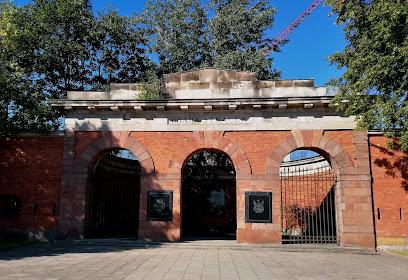
Poniatówka
Experience the serene charm of Poniatówka Beach in Warsaw, where urban life meets natural beauty along the Vistula River.
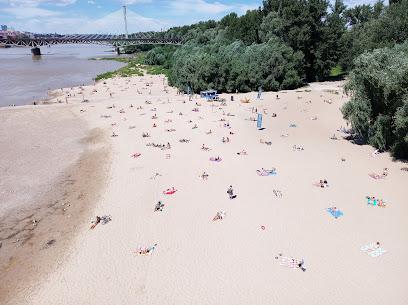
Reduta Bank of Poland
Discover the historical elegance of Reduta Bank of Poland, a stunning venue blending rich culture with modern celebrations in the heart of Warsaw.
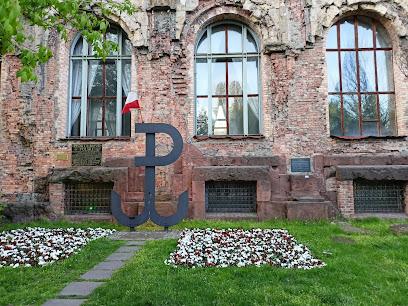
St. Stanislaus Kostka Church, Warsaw
Discover the architectural beauty and spiritual serenity of St. Stanislaus Kostka Church in the heart of Warsaw's Żoliborz district.
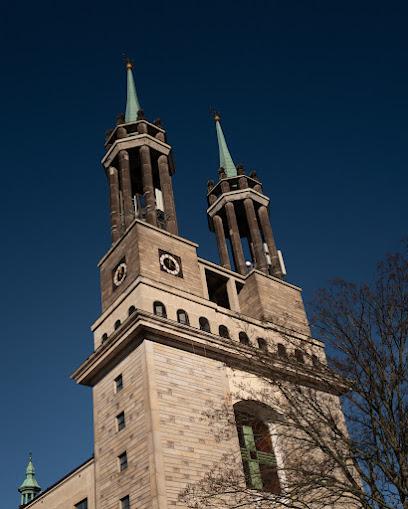
Sokolnicki fort
Discover Sokolnicki Fort, a cultural gem in Warsaw's Żoliborz, where history meets modern community engagement in a vibrant setting.
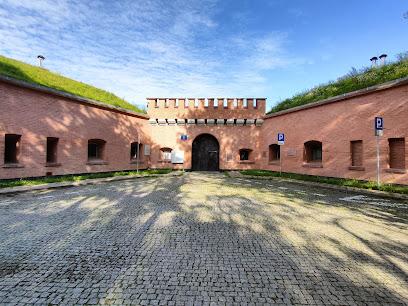
Rezerwat przyrody Łosiowe Błota
Discover the tranquil beauty of Łosiowe Błota, a nature reserve in Poland, perfect for wildlife lovers, hikers, and those seeking peace in nature.
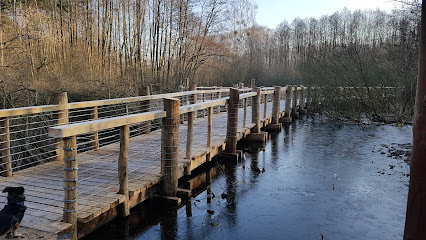
Wieża widokowa
Discover stunning views and natural beauty at the Kampinos Observation Tower, a must-visit destination in Kampinos National Park.
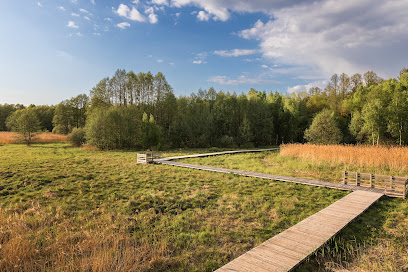
Czapski Palace
Explore the artistic heritage of Warsaw at Czapski Palace, an exquisite art gallery housed in a historic neoclassical palace offering a unique cultural experience.
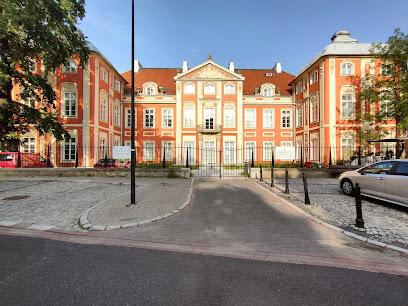
Keret House
Explore Keret House in Warsaw, an architectural marvel renowned as the narrowest house in the world, blending creativity with urban charm.
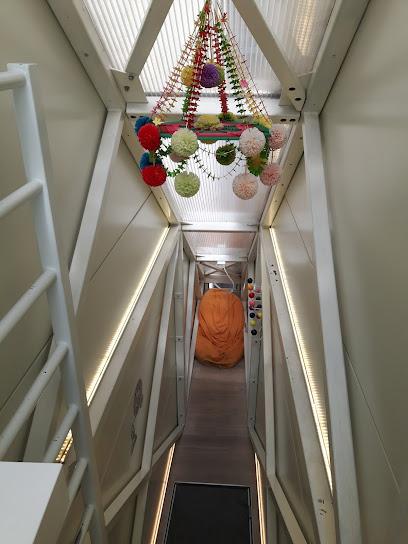
Góra Ojca
Explore Góra Ojca, a serene park in Mazowsze, perfect for nature walks, hiking, and enjoying the beauty of Poland’s landscapes.
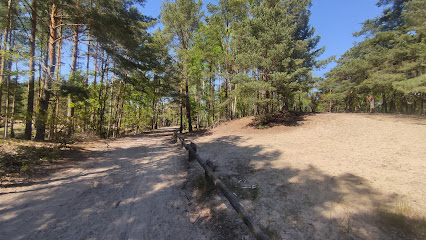
Essential places to dine
Markets, malls and hidden boutiques
Kampinos National Park
Discover the enchanting beauty of Kampinos National Park, a sanctuary for nature lovers and adventurers just outside Warsaw, Poland.
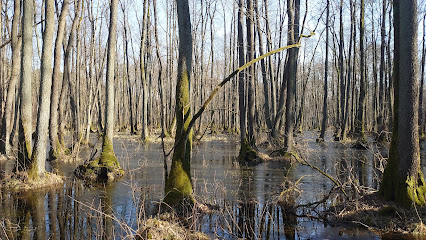
Amusement Park Julinek
Explore the thrills of Amusement Park Julinek, where adventure meets fun with rides, playgrounds, and year-round activities for the whole family.
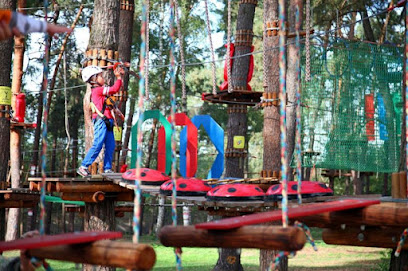
Biedronka
Explore Biedronka in Leszno, where you can find a variety of groceries, local specialties, and everyday essentials at discount prices.
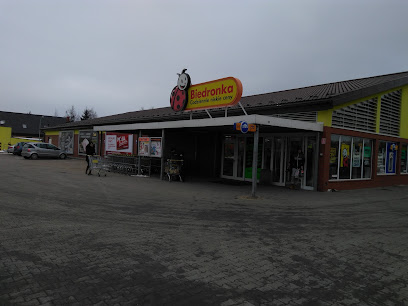
Skansen budownictwa puszczańskiego w Granicy
Explore the rich cultural heritage of the Kampinos Forest at Skansen Budownictwa Puszczańskiego, a captivating open-air museum.
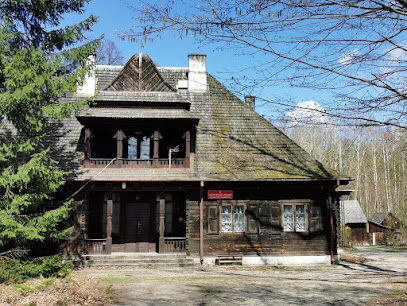
Polana Opaleń
Discover the peaceful sanctuary of Polana Opaleń, a perfect picnic ground surrounded by lush forests in Laski, Poland.
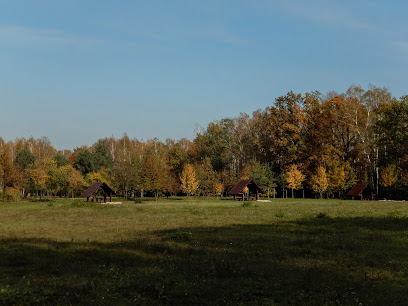
Sacrum s.c. Teresa Kąpińska Janusz Kapiński
Discover spiritual treasures and unique gifts at Sacrum s.c. in Leszno, where tranquility meets tradition in a charming church supply store.

Aroma-Mix
Discover the delightful blend of grocery shopping and authentic Polish dining at Aroma-Mix in Wólka Czosnowska for an unforgettable culinary experience.
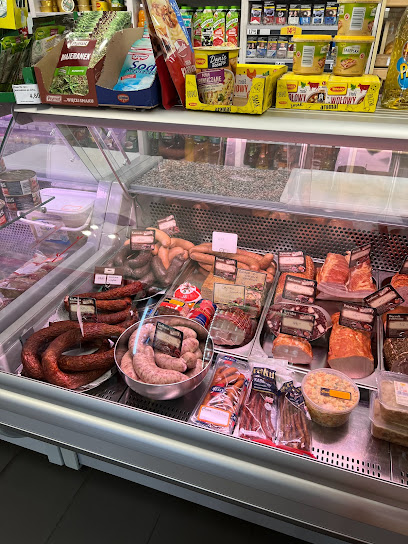
Ścieżka dydaktyczna Skrajem puszczy
Explore the breathtaking trails of Ścieżka dydaktyczna Skrajem puszczy, where nature meets adventure in the heart of Kampinos National Park.
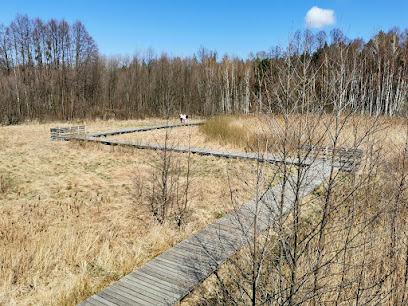
Autovip R.Mielczarek A.Wierzbicka Sp.J.
Visit Autovip for unparalleled automotive services and parts in the heart of Zaborów, Poland, ensuring your vehicle runs smoothly and efficiently.
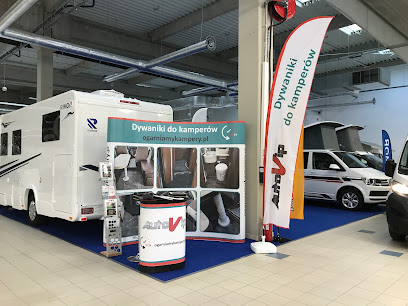
Kampinoski Park Narodowy
Discover the natural beauty and diverse wildlife of Kampinoski National Park, a peaceful retreat just outside Warsaw, perfect for outdoor adventures and relaxation.
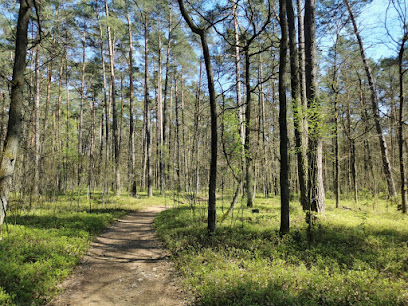
Delikatesy Kaszubskie
Explore authentic Kashubian flavors at Delikatesy Kaszubskie, where local produce meets tradition in a delightful grocery shopping experience.
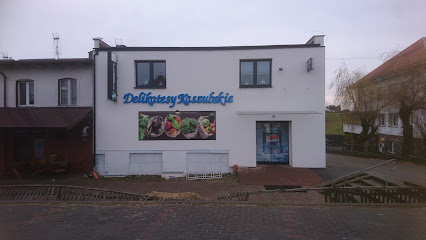
Roślinne Przestrzenie
Explore Roślinne Przestrzenie, a vibrant poster store showcasing unique art inspired by nature and culture, perfect for art lovers and travelers alike.

Atrakcje Bez Granic - Educated Person Paulina Kurowska
Discover breathtaking landscapes and unique adventures at Atrakcje Bez Granic, guided by the talented Paulina Kurowska for an unforgettable experience.
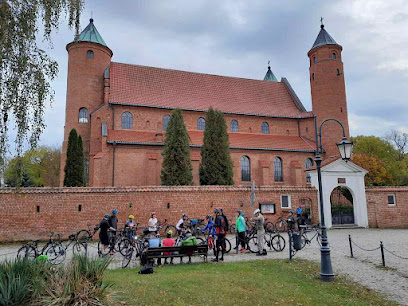
To Był Rok - Sklep internetowy z personalizowanymi prezentami
Explore To Był Rok for personalized gifts that turn memories into cherished keepsakes, perfect for tourists seeking unique souvenirs from Poland.

metalRoute
Discover a unique blend of fashion and local craftsmanship at metalRoute, Feliksów’s premier clothing store for stylish travelers.

Essential bars & hidden hideouts
Biker Pub Restauracja Grill & Bar Kampinos
Experience the perfect blend of cycling culture and delicious cuisine at Biker Pub Restauracja Grill & Bar Kampinos, a must-visit for every traveler.
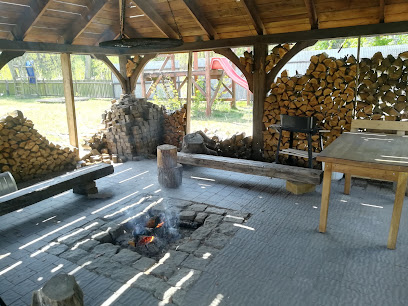
Fat & Bike Truskaw.
Experience the vibrant atmosphere and local flavors at Fat & Bike Truskaw, your go-to bar for relaxation in the heart of Poland.
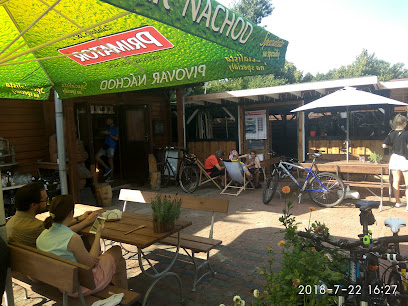
PUB 579
Discover the vibrant atmosphere of PUB 579 in Leszno, where locals and tourists alike enjoy exceptional drinks and warm hospitality.
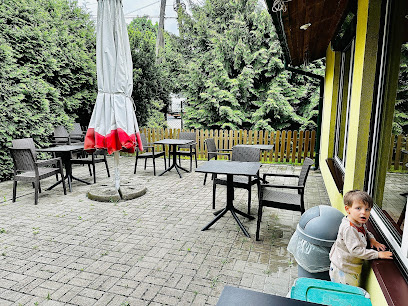
Bar Tomas
Discover Bar Tomas in Płochocin, where delicious pizzas and a cozy atmosphere await you for a delightful dining experience.
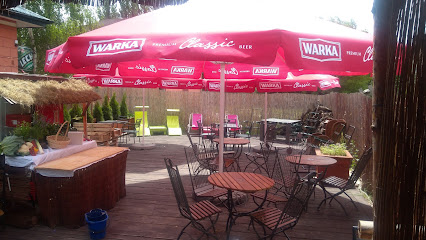
Pod Akacją Bar
Discover the charm of Borzęcin Duży at Pod Akacją Bar, a cozy retreat for tourists to enjoy local drinks and snacks in a welcoming atmosphere.
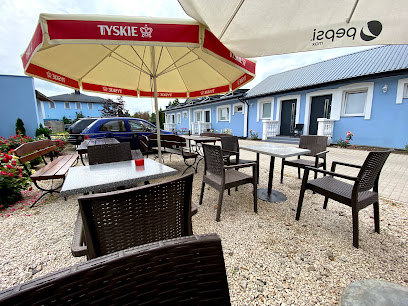
Best Fly Bar
Best Fly Bar: A lively bar in Nowy Dwór Mazowiecki offering delicious pizzas, coffee, and a welcoming atmosphere for all tourists.
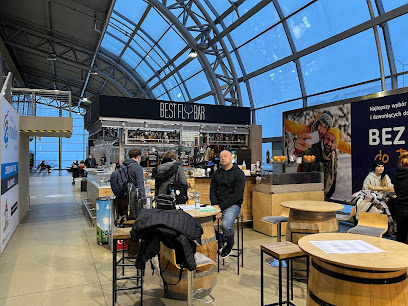
Grill Bar & Ognisko
Discover the authentic taste of Poland at Grill Bar & Ognisko in Roztoka, where grilled delights and warm hospitality await every visitor.
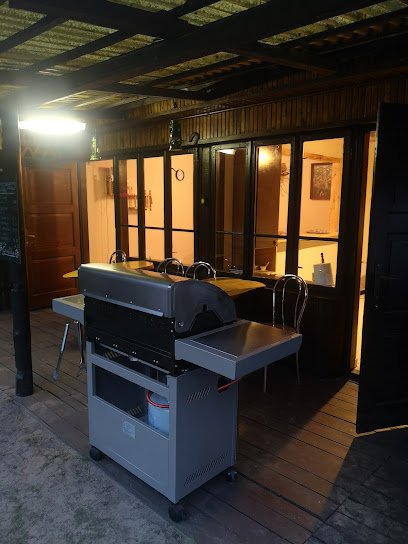
Casa de Manhattan
Experience the lively atmosphere and exquisite cocktails at Casa de Manhattan, the top bar in Ożarów Mazowiecki for a memorable night out.
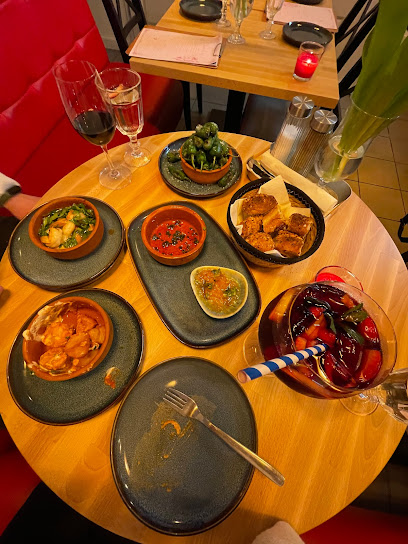
Bar Na Skarpie
Discover the warmth and charm of Bar Na Skarpie in Dziekanów Polski, where every sip tells a story and every visit feels like home.
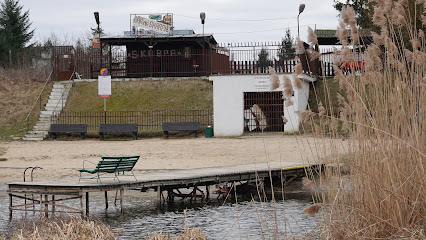
KURCZAK Z ROŻNA
Experience the authentic taste of Poland at KURCZAK Z ROŻNA in Białuty, offering delicious roasted chicken and a cozy bar atmosphere.
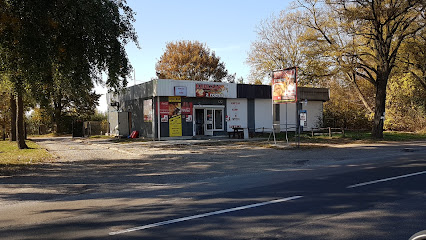
Zacne wino
Discover Zacne Wino in Izabelin C for an unforgettable wine experience, offering a selection of local and international wines in a cozy atmosphere.
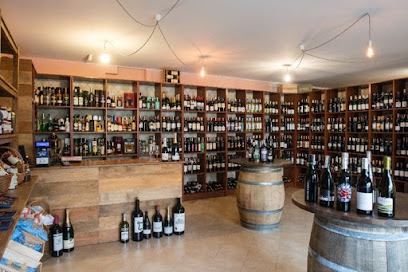
Jubilatka. Zajazd, bar. Sitarska E.
Discover the charm of Jubilatka, a cozy bar in Poland offering local drinks and a warm atmosphere perfect for tourists seeking relaxation.
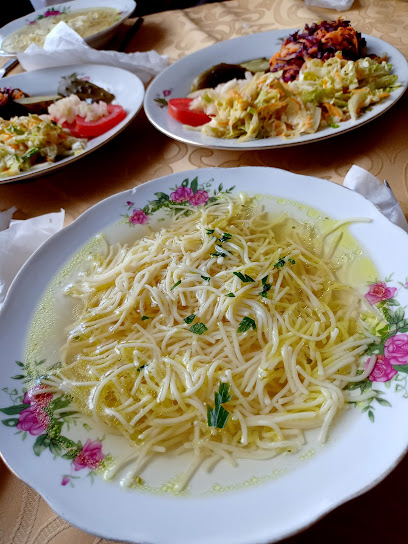
Zajazd w Granicy ER-MAG Bar Ogniska Kuligi. Kampinoski Park Narodowy
Experience the authentic flavors of Poland at Zajazd w Granicy ER-MAG, nestled in the heart of Kampinos National Park.
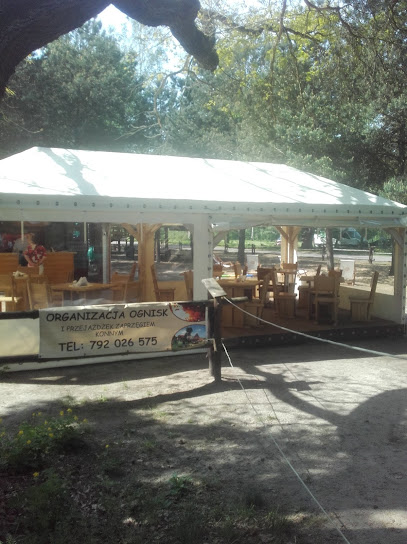
PUB U Bossa
Discover the lively PUB U Bossa, a brewpub and disco club in Nowy Dwór Mazowiecki, perfect for great beer, karaoke, and unforgettable nights.
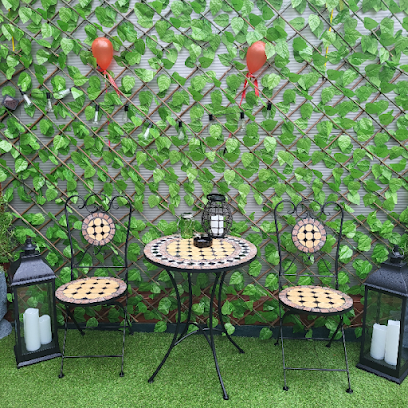
Bar M&M
Experience the vibrant atmosphere of Bar M&M in Bronisze, where locals and tourists come together to enjoy refreshing drinks and unwind.

Local Phrases about Kampinos National Park
-
- HelloCześć
[cheh-shch] - GoodbyeDo widzenia
[doh veed-zen-ya] - YesTak
[tahk] - NoNie
[nyeh] - Please/You're welcomeProszę
[proh-sheh] - Thank youDziękuję
[dzyen-koo-yeh] - Excuse me/SorryPrzepraszam
[psheh-prah-sham] - How are you?Jak się masz?
[yahk shyeh mahsh] - Fine. And you?Dobrze. A ty?
[doh-bzheh. ah ti] - Do you speak English?Czy mówisz po angielsku?
[chi mooh-veesh poh ahn-gyehl-skoo] - I don't understandNie rozumiem
[nyeh roh-zoo-myem]
- HelloCześć
-
- I'd like to see the menu, pleaseChciałbym zobaczyć menu, proszę
[h-chyahw-bim zoh-bah-chich meh-noo, proh-sheh] - I don't eat meatNie jem mięsa
[nyeh yem myen-sah] - Cheers!Na zdrowie!
[nah zdroh-vyeh] - I would like to pay, pleaseChciałbym zapłacić, proszę
[h-chyahw-bim zah-plah-cheech, proh-sheh]
- I'd like to see the menu, pleaseChciałbym zobaczyć menu, proszę
-
- Help!Pomocy!
[poh-mo-tsi] - Go away!Idź sobie!
[ee-dzh soh-byeh] - Call the Police!Zadzwoń po policję!
[zahd-von poh po-lee-tsyeh] - Call a doctor!Zadzwoń po lekarza!
[zahd-von poh leh-kah-zah] - I'm lostZgubiłem się
[zgoo-byeh-wem shyeh] - I'm illJestem chory
[yeh-stem hoh-ri]
- Help!Pomocy!
-
- I'd like to buy...Chciałbym kupić...
[h-chyahw-bim koo-peech] - I'm just lookingTylko się rozglądam
[tih-ko shyeh rohz-gwah-dam] - How much is it?Ile to kosztuje?
[ee-leh toh kohs-too-yeh] - That's too expensiveTo jest za drogie
[toh yest zah droh-gyeh] - Can you lower the price?Czy możesz obniżyć cenę?
[chi mooh-zhesh ohb-nee-zhich cheh-neh]
- I'd like to buy...Chciałbym kupić...
-
- What time is it?Która jest godzina?
[ktoo-rah yest goh-dzee-nah] - It's one o'clockJest pierwsza
[yest pyeh-rv-shah] - Half past (10)Pół do dziesiątej
[poow doh dzyeh-shoohn-tey] - MorningRano
[rah-no] - AfternoonPopołudnie
[poh-poo-woo-dnyeh] - EveningWieczór
[vyeh-choor] - YesterdayWczoraj
[v-chaw-rye] - TodayDzisiaj
[dzyee-sai] - TomorrowJutro
[yoo-tro] - 1Jeden
[yeh-den] - 2Dwa
[dvah] - 3Trzy
[tshih] - 4Cztery
[ch-tseh-ri] - 5Pięć
[pyehnch] - 6Sześć
[sheshch] - 7Siedem
[syeh-dem] - 8Osiem
[oh-shem] - 9Dziewięć
[dzyeh-vyehnch] - 10Dziesięć
[dzyeh-shoohn-ch]
- What time is it?Która jest godzina?
-
- Where's a/the...?Gdzie jest...?
[g-jeh yest] - What's the address?Jaki jest adres?
[yah-kee yest ah-dresh] - Can you show me (on the map)?Czy możesz mi pokazać (na mapie)?
[chi mooh-zhesh mee poh-kah-zach (nah mah-pee-eh)] - When's the next (bus)?Kiedy jest następny (autobus)?
[kyeh-dih yest nah-stehp-nih (ow-toh-boo-s)] - A ticket (to ....)Bilet (do ....)
[bee-let (doh)]
- Where's a/the...?Gdzie jest...?
History of Kampinos National Park
-
The area now known as Kampinos National Park has been inhabited since prehistoric times. Archaeological findings suggest that early human settlements existed here as far back as the Stone Age. These early settlers were primarily hunter-gatherers who were drawn to the area because of its abundant natural resources, including rich forests and plentiful wildlife.
-
During the medieval period, the Kampinos Forest was largely untouched by human activity due to its dense and impenetrable nature. However, it served as a strategic hiding place for local populations during times of conflict. The forest also became a source of timber and other forest products, which were crucial for building and daily life in nearby villages and towns.
-
In the mid-17th century, Poland was invaded by Swedish forces during a period known as the Swedish Deluge. Kampinos Forest played a significant role as a refuge for Polish partisans and local residents who resisted the Swedish occupation. The dense forest provided cover and concealment, making it difficult for the invading forces to navigate and control the area.
-
Kampinos National Park holds a poignant place in World War II history. The forest was a significant site for partisan activity during the Nazi occupation of Poland. The Polish resistance, including the famous Home Army (Armia Krajowa), used the forest as a base for guerrilla warfare against the occupying forces. Several battles and skirmishes took place in the forest, and numerous memorials now stand in tribute to those who fought and died there.
-
Kampinos National Park was officially established in 1959, making it one of Poland's oldest national parks. The park was created to preserve the unique natural landscape and biodiversity of the Kampinos Forest. Covering an area of approximately 385 square kilometers, the park is a haven for wildlife and a popular destination for nature lovers. Its establishment marked a significant milestone in the conservation movement in Poland.
-
In 2000, Kampinos National Park was designated a UNESCO Biosphere Reserve. This recognition highlights the park's global importance as a site for biodiversity conservation and sustainable development. The designation also underscores the park's role in promoting research, education, and eco-tourism. The park's management continues to balance conservation efforts with the needs of local communities and visitors.
Kampinos National Park Essentials
-
Kampinos National Park is located approximately 30 kilometers west of Warsaw, Poland's capital city. The nearest international airport is Warsaw Chopin Airport. From the airport, you can take a taxi, rent a car, or use public transportation to reach the park. Buses and trains from Warsaw are available and provide a scenic route through the Polish countryside. The journey typically takes around 1 to 1.5 hours by road.
-
Within Kampinos National Park, the best way to explore is by hiking or cycling, as there are numerous well-marked trails. If you prefer not to walk, bicycles can be rented in nearby towns. Public transport options, such as buses and minibuses, are available from Warsaw to the park's vicinity. Taxis and ride-sharing services are also an option for more direct routes.
-
The official currency in Poland is the Polish Zloty (PLN). Credit cards are widely accepted in hotels, restaurants, and larger shops in the towns surrounding the park. However, it is advisable to carry some cash, especially for smaller establishments or when purchasing tickets and souvenirs within the park. ATMs are available in nearby towns, so it is wise to withdraw sufficient cash before entering the park.
-
Kampinos National Park is generally a safe destination for tourists, with low crime rates. However, as with any travel destination, it is advisable to take standard precautions. Avoid walking alone at night in unfamiliar areas, and keep an eye on your belongings, especially in crowded places. There are no specific high-crime areas targeting tourists within the park or its surroundings, but always stay vigilant and aware of your surroundings.
-
In case of an emergency, dial 112 for immediate assistance. There are local police stations and medical facilities in nearby towns such as Sochaczew and Nowy Dwór Mazowiecki. It is recommended to have travel insurance that covers medical emergencies. For minor health issues, there are pharmacies in these towns where you can purchase over-the-counter medications.
-
Fashion: Do dress appropriately for outdoor activities; wear comfortable shoes and weather-appropriate clothing. Avoid wearing overly flashy or revealing clothing. Religion: Do respect local customs and traditions. Although the park itself is secular, nearby areas may have religious sites. Public Transport: Do be respectful and give up your seat to elderly passengers. Don’t eat or drink on public transport. Greetings: Do greet people with a smile or a simple 'Dzień dobry' (Good day). Handshakes are common. Eating & Drinking: Do try local Polish delicacies and accept food offerings graciously. Don’t refuse hospitality, as it is considered impolite.
-
To experience Kampinos National Park like a local, consider visiting during the off-peak seasons for a more serene experience. Engage with local guides who can offer insights into the park's flora, fauna, and history. Don’t miss visiting the Palmiry Cemetery and Museum, which commemorates the victims of Nazi atrocities during World War II. Bring a picnic and enjoy a meal surrounded by nature, a favorite activity for local families. Finally, be sure to check out local markets in nearby towns for fresh produce and traditional Polish goods.
Trending Landmarks in Kampinos National Park
Nearby Cities to Kampinos National Park
-
Things To Do in Lodz
-
Things To Do in Radom
-
Things To Do in Torun
-
Things To Do in Kielce
-
Things To Do in Olsztyn
-
Things To Do in Lublin
-
Things To Do in Bialystok
-
Things To Do in Czestochowa
-
Things To Do in Bydgoszcz
-
Things To Do in Elblag
-
Things To Do in Poznan
-
Things To Do in Suwalki
-
Things To Do in Krakow
-
Things To Do in Tarnow
-
Things To Do in Gdansk





